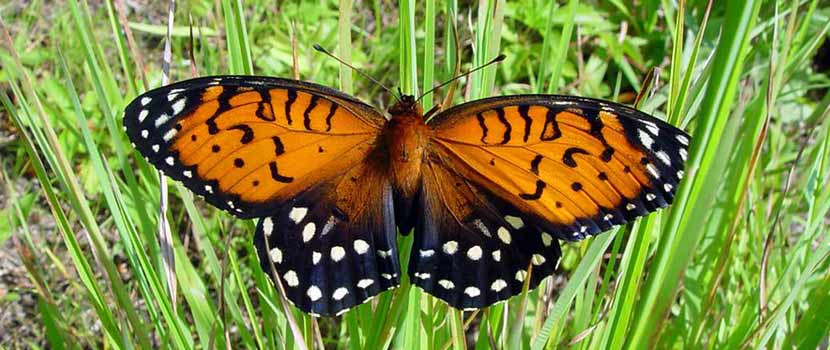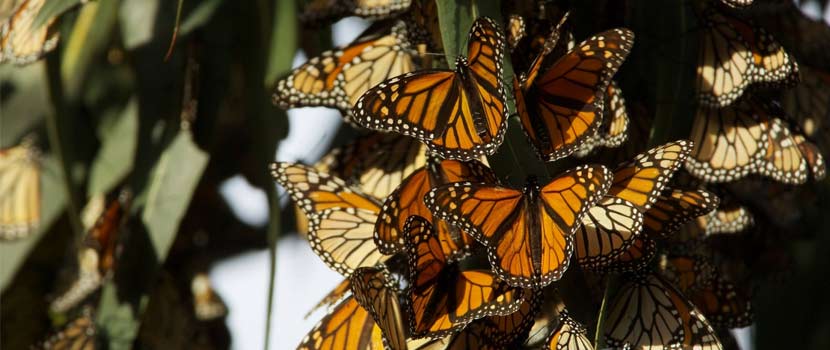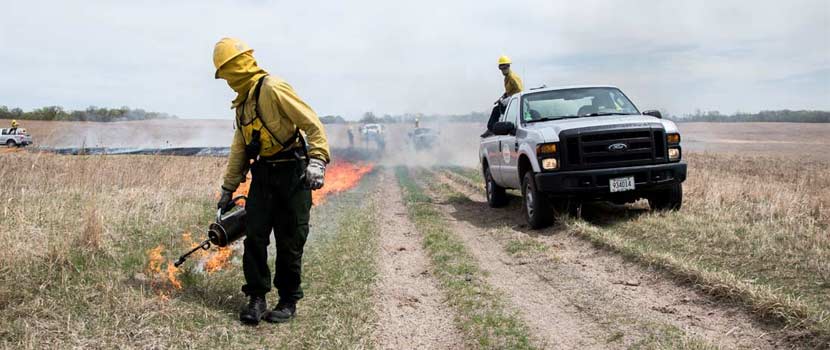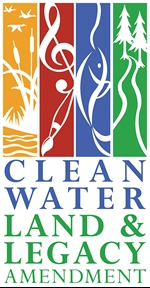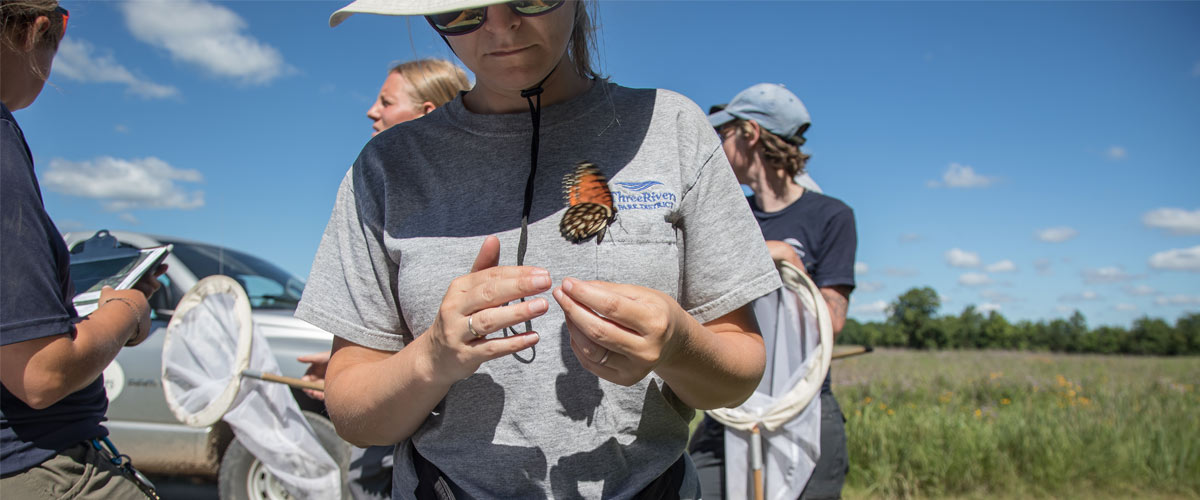
Bringing Back Butterflies: What It Takes To Complete A Reintroduction
By: John Moriarty
August 16, 2021
Category: Resource Management
At Three Rivers Park District we manage many high-quality habitats, including prairies. Our prairies have a diversity of flowers that bloom from early May through October, providing a wide variety of wildflowers for butterflies to nectar on and many caterpillars to feed on. This makes them ideal locations for butterfly reintroductions. However, reintroducing butterflies into our parks can be a long process that requires several steps before we even release the butterflies. Read on to learn all about what it takes to reintroduce butterflies at Three Rivers.
Providing the Right Food
Reintroducing butterflies into our prairies requires making sure they (and their caterpillars) have the right food readily available. Some butterflies require specific species of plants for their caterpillars to feed on. The best known of these is monarchs; their caterpillars only feed on milkweed plants. At Three Rivers, we have planted six species of milkweed and regularly add more seeds to our prairies to increase the density.
We recently reintroduced regal fritillaries into the prairie at Crow-Hassan Park Reserve. Regal caterpillars only feed on violet leaves, so we prepared the park by planting 10,000 violet plants prior to introducing the butterflies.
We then had to capture butterflies for the release. We collected them from an area near Wabasha, Minnesota, since regals do not migrate or disperse the way monarchs do. In fact, they rarely fly more than a couple of miles from where they hatch. By making sure they had the correct food (host plant), the introduction was successful.
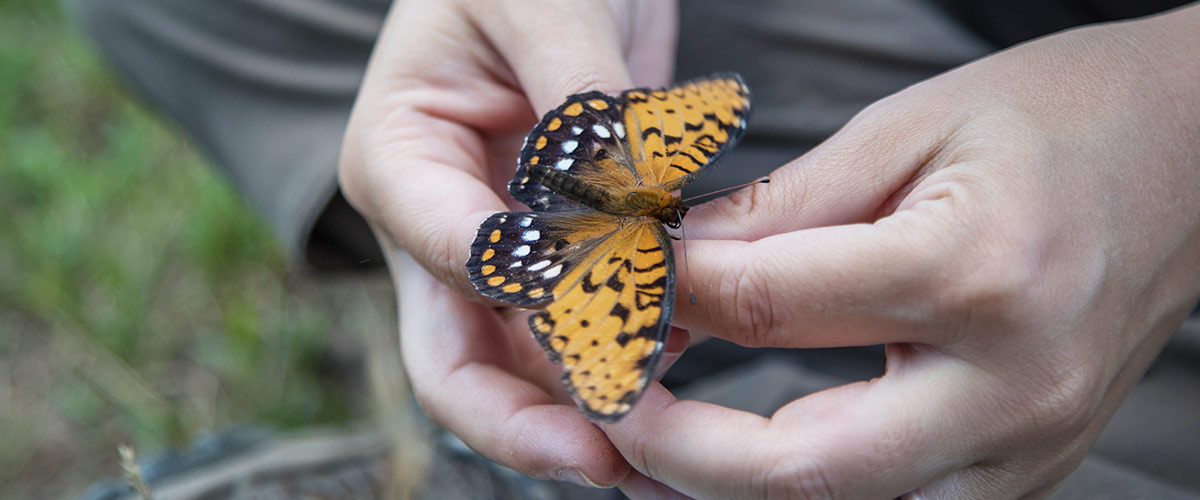
Adjusting Burn Plans for Butterflies
We have also adjusted our prescribed burn plans to make sure there are refuges for the overwintering caterpillars and eggs.
Many butterflies overwinter as eggs on plant leaves or as caterpillars at the base of prairie grasses. At these life stages, they can be very susceptible to fire. If the entire prairie were burned at once, these species would be lost, and overall insect diversity would be decreased.
We try not to burn adjacent prairie units in the same year and only burn each unit every four to five years. This cycle allows the butterflies and other insects to recolonize the managed areas.
Potential Future Introductions
There are other species of butterflies that are not currently found in our prairies, even though we have the correct food and nectar plants. This is mainly because many prairie species are like regal fritillaries in that they do not fly very far and, therefore, cannot get to our prairies on their own.
Two species we are considering reintroducing into our parks are the Leonard’s skipper and the Karner blue butterfly. Both are small butterflies with wingspans of only one inch.
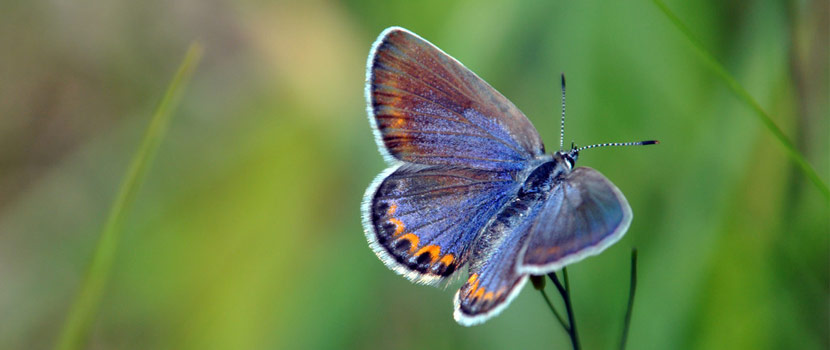
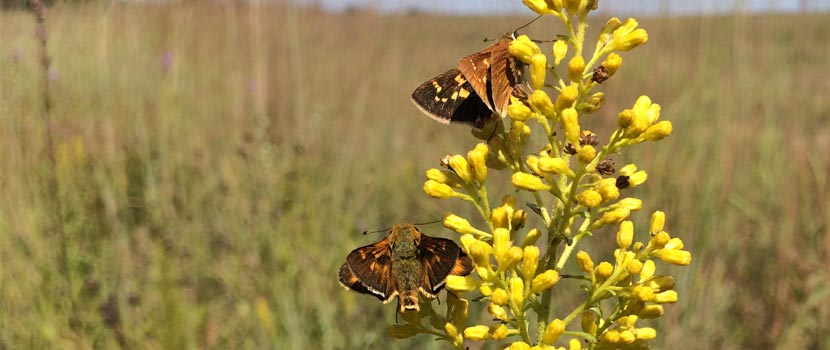
Adult Leonard’s skippers specialize in nectaring on blazing stars (Liatris sp.), and their caterpillars feed on a variety of native grasses. Karner blues are the opposite. The adults nectar on a variety of plants, but the caterpillars only feed on wild lupine. Crow-Hassan Park Reserve has large amounts of the specialty and general plants needed to support their life cycles.
Securing Permission and Timing Collection
Collecting and moving both Karner blues and Leonard’s skippers requires state permits. For the Karner blue butterfly, we must also secure a permit from the U.S. Fish & Wildlife Service because it is an endangered species.
In addition to permits, we also need permission from the landowner to collect on their property, which includes state and federal properties. Sometimes the paperwork planning takes longer than the actual capturing and release.
Both the butterflies have a short flight time (the number of days the adults are out and laying eggs) of a couple of weeks, so timing the visit to the collecting site is critical. Once the butterflies are caught, they need to be transported to the release site as soon as possible. Most butterflies do not do well being held in captivity.
We release butterflies in the middle of the best habitat we have with the home that they will start laying eggs. It sometimes takes several generations for the population to become established and grow.
If discussions with the MN DNR and USFWS go well, we hope to start the Karner blue introduction in 2022 or 2023.
Archive image: "Leonard's Skipper on Blazing Star" by U.S. Fish and Wildlife Service - Midwest Region is licensed under CC BY 2.0
About the Author
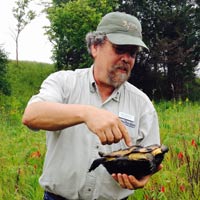
John Moriarty is the Senior Manager of Wildlife at Three Rivers Park District and has been with the Park District for 15 years. He has been involved in many of the wildlife restoration efforts and initiated the snake and butterfly efforts. John has led several projects to increase prairie habitat in the Park District. John likes exploring natural areas and looking for all types of plants and animals, but especially turtles.
Related Blog Posts
Regal Fritillary: A Rare Butterfly That Is Thriving in Three Rivers
By: John Moriarty
Regal fritillary butterflies have sharply declined in population and are listed as a species of special concern in Minnesota. Learn how and why they are thriving at Crow-Hassan Park Reserve.
Pollinators: The Great Monarch Migration
By: Elaine Tucker
Have you ever wondered what a monarch tag is or why we tag monarch butterflies? Read on to discover more about these beautiful insects and their incredible 2,000-mile migration.
Prairie Burns: Protecting Precious Habitat with Fire
By: Erin Korsmo
Three Rivers conducts controlled burns at its prairies each spring. Learn what goes into burning a prairie and why fire is so important to preserving this special habitat.
